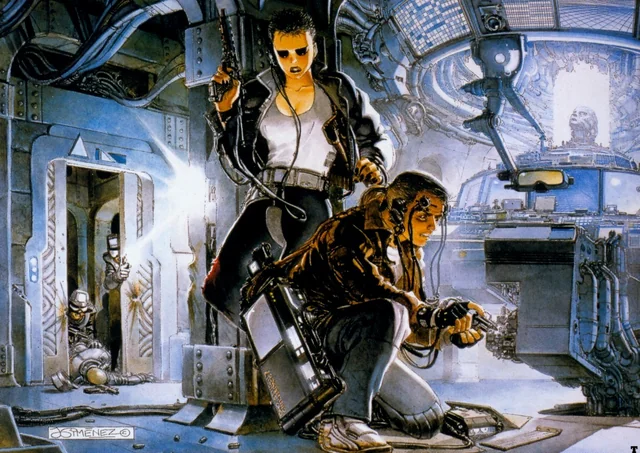In my opinion, human augmentation is no longer confined to the realms of science fiction. As technologies like neuroprosthetics and brain-computer interfaces (BCIs) emerge, the lines between the natural and artificial grow increasingly blurred. Reflecting on the insights from our cyberpunk class, The Wandering Earth, and Hossain and Ahmed’s ethical analysis of neurotechnology, it’s clear that the future of human enhancement holds incredible potential, but it is brought with challenges
Human augmentation is positioned to transform how we live, work, and interact. In the medical field, which is a field I desire to work in, as highlighted by Hossain and Ahmed, technologies like BCIs and tactile neuroprosthetics could enhance cognition, precision, and sensory input for surgeons and physicians. Beyond healthcare, augmented reality interfaces, robotic exoskeletons, and memory-enhancing implants may become accessible, reshaping productivity and personal potential. In The Wandering Earth, we saw how technological ingenuity was essential for humanity’s survival; similarly, neurotechnologies could empower individuals to achieve beyond natural limitations, enabling faster learning, better decision-making, and expanded physical abilities.
However, as we discussed in class, such technologies also carry significant risks. Ethical concerns about autonomy, equity, and identity mirror cyberpunk narratives where augmentation creates dystopian realities. For instance, Hossain and Ahmed raise critical points about the dangers of malicious brain-hacking, loss of personal agency, and deepening social divides, all of which resonate with the cautionary themes of cyberpunk media.
In our lifetime, options for augmentation will likely range from sensory enhancements (such as improved vision or tactile sensitivity) to advanced cognitive implants that boost memory and attention. Hossain and Ahmed discuss how neuroprosthetics can be combined with tactile sensors to give surgeons the ability to feel during operations, enabling greater precision. Similarly, BCIs could allow individuals to interface directly with machines, streamlining tasks like education or professional training.
I would consider augmentations that enhance quality of life without compromising identity or autonomy. For instance, cognitive implants to improve focus or memory would be appealing, especially for tasks requiring long-term retention and problem-solving. Sensory enhancements, like advanced vision or hearing, could enrich daily experiences while maintaining personal agency.
However, I would reject augmentations that compromise mental integrity or exacerbate inequality. Hossain and Ahmed warn of malicious brain-hacking, where external agents could manipulate neural activity, stripping individuals of autonomy. This is unacceptable, as it poses risks not only to personal identity but also to broader societal trust. I would also reject adaptations that create unjust advantages, such as cognitive implants for competitive edge in professional or academic settings, as they could lead to new forms of discrimination and inequality.
The societal pressures to adopt augmentations are another concern. Hossain and Ahmed argue that non-augmented individuals might be perceived as inferior, leading to marginalization. This echoes the cyberpunk cautionary tales we’ve studied, where technology often amplifies societal divides rather than bridging them.
References: Hossain, S. Q., & Ahmed, S. I. (n.d.). Ethical analysis on the application of neurotechnology for human augmentation in physicians and surgeons. https://arxiv.org/html/2006.16925v3


